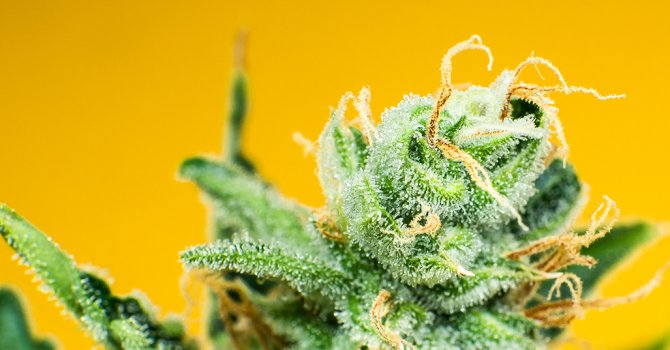
14 Feb Spirit Molecules
An abbreviated version of this article was first printed in Broccoli Magazine.
While studying a rare Ecuadorian lichen traditionally known as a source of evil death magic, scientists made an intriguing discovery. Not only is Dictyonema Huaorani the first non-mushroom found to contain psilocybin — the compound that puts the magic in “magic mushrooms” — but it also produces DMT, the psychedelic compound in ayahuasca.1 And it’s far from the only unusual plant consumed for its mind-altering properties.
There are tales and traditions of consuming psychedelic plants from every corner of human civilization. For centuries, native peoples in the American Southwest and South America have eaten morning glory seeds to experience divining visions.2 In 1676, soldiers responsible for repressing Bacon’s Rebellion in Jamestown ate boiled Jimsonweed greens and tripped for several days.3 And during the Middle Ages, women healers in Europe brewed herbal concoctions with vision-inducing belladonna, mandrake, and thorn apple.
Humans are innately attracted to plants and fungi that produce altered states. From magic mushrooms to ayahuasca vines to liverwort — in our brief history on this planet we’ve sought out ways to alter our perception. We should give thanks to our ancestors who figured out which mushrooms could expand our consciousness, and which lethal fungi took us straight to that great mystery beyond.
Why do plants produce intoxicating compounds?
Plants and mushrooms have been around a lot longer than people. So why did they develop all of these compounds that humans find so fascinating?
Plants can’t move quickly and are at the mercy of the hungry insects and animals around them. Which is where evolution comes in. Organisms evolve various traits to help them survive and thrive. And that includes their chemical traits. Cocaine, psilocybin, monoamine oxidase inhibitors (MAOIs), opioids, nicotine, DMT, and mescaline are all alkaloids.
Plant alkaloids are usually pretty bitter and therefore really good at deterring hungry critters looking for an easy meal. Alkaloids are also used by plants to regulate growth, process nutrients, and respond to stressful situations. And perhaps by an accident of fate, consuming some of those alkaloids can make us feel as high as kites.
Alkaloids are far from the only class of chemicals that can trigger a high — or protect plants. Plants use a variety of compounds to mitigate other dangers, like drought, and to promote growth and regulate their cells.4 Take cannabinoids, for example. Cannabinoids likely developed in cannabis plants to protect sensitive plant tissue from UV radiation.5 And cannabinoids are part of the larger family of aromatic terpenoid compounds, which developed as a way to attract or repel insects.
Why Do Psychedlics Make Us High?
Plants use these chemicals to ensure their survival — why do humans find consuming them so powerful?
It turns out that some of these chemicals can profoundly change the way we see the world by tapping into how we function biologically. Psychedelic substances, such as mushrooms and the peyote cactus, alter our consciousness by stimulating a serotonin receptor in the central nervous system. And cannabis compounds, such as tetrahydrocannabinol (THC), change our mood by interacting with endogenous cannabinoid receptors throughout the brain and body. The systems these receptors are a part of are vital to our well-being. It feels good when they are functioning properly.
Ritual use of intoxicants began before the written word. Peyote buttons dated to 3750 BCE were discovered in the Shumla Caves in Texas, along with ritual artifacts.6 Shamanistic practices all over the world have utilized fungi and plant substances to apprehend the divine. And it’s come full circle. Intoxicating plants helped shape the world as we know it, and this has allowed many of us to connect with deeper truths about ourselves and the universe.
The Evolutionary Advantages
Humans aren’t the only animals that seek out intoxicating plants. All mammals have cannabinoid and serotonin receptors — which might explain why so many have been observed consuming psychedelic plants.7 There are reports of jaguars chewing ayahuasca vines, reindeer eating magic mushrooms, and monkeys enjoying fermented fruit. It’s been theorized that sub-threshold amounts of psilocybin may enhance the ability of humans to detect the edges of objects, improving our visual acuity.8 This sort of effect could have provided an edge to those early humans who depended on hunting, not to mention avoiding predators, to survive. Could other animals benefit in a similar manner?
As crazy as it might seem, intoxication could be one of the primary driving forces in the natural world — leading to new and advantageous patterns of behavior. Psychedelics might not just be an accident of nature, but a vital factor in our evolution and spiritual development.
Zoe Sigman is Project CBD’s Program Director and the Science Editor at Broccoli Magazine.
This piece was reprinted by Project CBD with permission. It may not be reproduced in any form without approval from the source.



Sorry, the comment form is closed at this time.